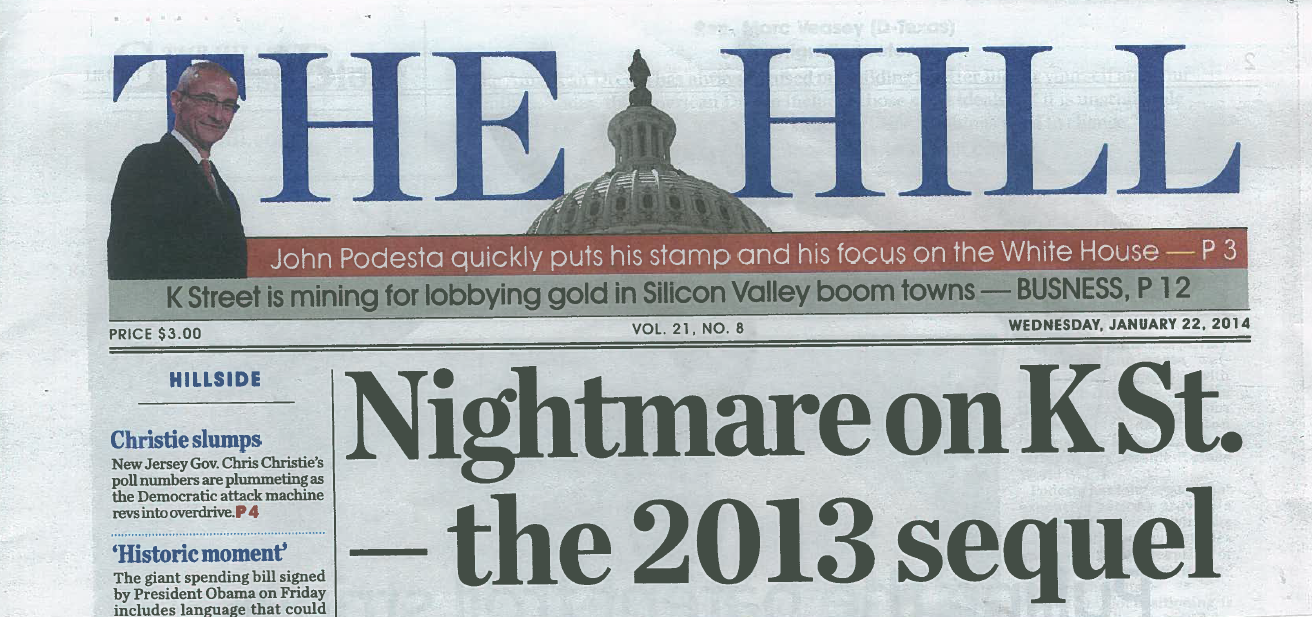Know Your Libertarian History: The Great Tax Revolt of the 1970s
One of the great libertarian victories of the past few decades was the tax revolt of the late 1970s and early 1980s. The inflation of the 1970s caused higher property taxes and income tax bracket creep, which led to California’s Proposition 13, the Kemp-Roth tax cut bill, the election of Ronald Reagan in 1980, the 1981 tax cut, the deceleration of government spending, the further lowering of marginal rates in 1986—and a long period during which economic growth exceeded government growth.
This story isn’t told often in history books and popular media. Even with the boom in histories of modern conservatism, which in many instances focuses on the reaction to socialism and the welfare state, there is rarely a sense of the important arguments that free-market advocates were making. That’s why it’s important to have historians who understand economics and appreciate the value of limited government. One such historian is Brian Domitrovic, author of Econoclasts: The Rebels Who Sparked the Supply-Side Revolution and Restored American Prosperity.
In the latest issue of Cato Policy Report, the Cato Institute’s newsletter for Sponsors and friends, Domitrovic has a lead article titled “Tax Revolt! It’s Time to Learn from Past Success,” where he tells the story outlined above. If you get discouraged about the possibility of positive change, you should read it. Or read it if you just want to know more about the history of movements for limited government.
Also in the January-February Cato Policy Report: my editorial on Pope Francis, Nelson Mandela, and the longing for Utopia; leading scholars and policymakers on a century of central banking; and reports on NSA surveillance, jury nullification, and Cato’s recent policy studies.
Note that if you were a Cato Sponsor, you would get articles like this in your mailbox every month, along with the satisfaction of supporting the work of the Cato Institute. Become a Sponsor now!
Posted on January 31, 2014 Posted to Cato@Liberty
Nightmare on K Street: Lobbying Revenue Drops a Bit
The Hill, a newspaper covering Capitol Hill, published this scary headline this week:

What’s the nightmare? Lobbying revenues are down! How much? Well, The Hill doesn’t say. But the Washington Post reports:
The District’s 10 largest lobbying firms reported a collective 1 percent drop in lobbying revenue in 2013 compared with 2012, slipping to $226.3 million from $228.9 million.
Oh, the horror.
To be sure, the Post also notes that the revenue of the top 10 firms dropped 10 percent last year. So that’s a real cut. Still, these drops come after total lobbying expenditures doubled in a decade, peaking in those heady days of 2009 and 2010 when federal dollars were being handed out with wild abandon.
Why the slowdown since then? The Hill’s Kevin Bogardus and Megan Wilson note that “most lobby shops couldn’t escape the downward pull of a historically unproductive Congress.” Ah yes, that “least productive Congress” we keep hearing about. Well, this is what you get from an unproductive Congress: a tiny drop in expenditures on lobbying. Keep on being unproductive—of laws, regulations, taxes, grants, subsidies, loans, and bailouts—and maybe lobbying will keep on declining.
Of course, the lobbyists won’t take this lying down. Inside the same issue of The Hill, Wilson reports:
K Street lobbyists are racking up frequent flyer miles with regular trips to Silicon Valley in search of clients.
They are trading power suits for California casual to cash in on the explosive growth of technology lobbying, which has more than doubled over the past decade and shows no signs of slowing down.
Can’t keep a lobbyist down for long. As I’ve written before, Washington keeps telling tech executives, “Nice little company ya got there. Shame if anything happened to it.”
The most important factor in America’s economic future—in raising everyone’s standard of living—is not land, or money, or computers; it’s human talent. And every time some part of the human talent at another of America’s most dynamic companies is diverted from productive activity to protecting the company from political predation and even to engaging in a little predation of its own, it slows our economy down a bit. The parasite economy sucks in another productive enterprise, and we’ll all be poorer for it.
Meanwhile, a real “Nightmare on K Street” would be a blessing for the rest of us.
Posted on January 24, 2014 Posted to Cato@Liberty
The Baby Boom
In his first book of all new, previously unpublished material since 2007, best-selling humorist P. J. O’Rourke turns his lens on his fellow post-war babies. In The Baby Boom: How It Got That Way … And It Wasn’t My Fault … And I’ll Never Do It Again, O’Rourke draws on his own experiences and leads readers on a candid, laugh-out-loud journey through the circumstances and events that shaped a generation. “We’re often silly, and we’re spoiled by any measure of history,” writes O’Rourke. “At the same time we made the world a better place — just not necessarily in the ways we set out to.”
O’Rourke has reported on the inner workings of the U.S. government, explained the global economy, and written on the American automobile industry. At this Cato Book Forum, he will tackle the big, broad problems stemming from the generation that, for better or worse, changed everything.
Posted on January 22, 2014 Posted to Cato@Liberty
The Libertarian State of the Union
President Obama will address a number of critical topics in his State of the Union on January 28, and it won’t be easy to reassure the public after a rocky 2013. From never-ending budget battles to controversial NSA surveillance programs to the hemorrhaging state of Obamacare, the president’s big-government approach is floundering. These issues show that the libertarian message is more relevant than ever to federal policy debates.
Where will the ideas of freedom have the greatest impact in 2014? What role will libertarians play in shaping the debate both in Washington and across the country? David Boaz, the executive vice president of the Cato Institute, will discuss the state of the union from a libertarian perspective and take your questions.
Posted on January 22, 2014 Posted to Cato@Liberty
The Great Fact of Economic Growth, in Three Glimpses
In Bourgeois Dignity: Why Economics Can’t Explain the Modern World, economic historian Deirdre McCloskey writes about the “Great Fact” – the enormous and unprecedented growth in living standards that began in the western world around 1700. She calls it “a factor of sixteen”: we moderns consume at least 16 times the food, clothing, housing, and education that our ancestors did in London in the 18th century. Two new books help us to understand what that means.
In Sunday’s Washington Post, Jonathan Yardley reviews Flyover Lives, a family memoir by Diane Johnson. She found diaries from some of her Midwestern ancestors, and Yardley notes what they tell us:
It must be just about impossible for a denizen of middle-class 21st-century America to imagine the toil and suffering that Catharine Martin [born 1800] and her counterparts underwent every day: living in crude houses — mere huts when they first settled in Illinois and elsewhere — slaving at open fires to prepare food for their families, and worst of all watching children fall ill and having nothing in their powers to help them: “Within a year of her marriage, with the fated fertility of women then, Catharine had her first baby, and named her Catharine Anne, after herself. They called her Sissie. This baby was followed by Charlotte Augusta in 1830 and Martha Olivia in 1831. When they were one, three, and five years old, all three little girls died in the space of a week or two.” Catharine herself was ill but survived to write many years later: “When I got up, my house was empty, three little prattlers all gone, not one left.”
This isn’t so long ago. Catharine Martin was the great-great-grandmother of Diane Johnson. Go back another century, and read about 18th-century life in another new book, Three Squares by Abigail Carroll:
Invited to dine with a ferryman and his family, [a 1744 traveler from Maryland to Maine] declined. He described the meal: “They had no cloth upon the table, and their mess was in a dirty, deep, wooden dish which they evacuated with their hands, cramming down skins, scales, and all. They used neither knife, fork, spoon, plate, or napkin because, I suppose, they had none to use.”
By the standards of the age, the ferryman’s repast was ordered: “Only about a third of the families in seventeenth-century Virginia had chairs or benches, and only one in seven had both,” writes Ms. Carroll. Only about a quarter of the early Virginian houses had tables.
And finally, I note an older book on my own Scottish ancestors, The Scotch-Irish: A Social History by James G. Leyburn:
The squalor and meanness of [lowland Scottish] life around 1600 [or 1700] can hardly be conceived by a person of the twentieth century. A cluster of hovels housed the tenants and their helpers….A home was likely to be little more than a shanty, constructed of stones, banked with turf, without mortar, and with straw, heather, or moss stuffed in the holes to keep out the blasts….The fire, usually in the middle of the house floor, often filled the whole hut with malodorous clouds, since the smoke-clotted roof gradually stopped the vent-hole. Cattle were tethered at night at one end of the room, while the family lay at the other end on heather piled upon the floor….Vermin abounded…skin diseases…Infectious diseases were propagated readily.
According to scholars such as Angus Maddison and Brad DeLong, GDP per capita hardly rose for thousands, or tens of thousands, of years before the emergence of capitalism. And then after 100,000 years of stagnation (by DeLong’s estimates), around 1750 capitalism and growth began, first in Northern Europe and the American seaboard, and spreading ever since to more parts of the world. That is, the existence of relatively free markets is the reason we don’t live like my Scottish ancestors. This is indeed the Great Fact of the modern world. We should celebrate it, even as we work to extend the benefits of markets to people and nations who don’t yet enjoy as much capitalism as they should.
Posted on January 20, 2014 Posted to Cato@Liberty
Obama Allows Congress to Participate in Lawmaking
This headline appeared in Thursday’s Washington Post:

The story reports that President Obama “will call on Congress to help determine the [NSA surveillance] program’s future. Which is good because Article I, Section 1, of the Constitution of the United States provides that:
All legislative Powers herein granted shall be vested in a Congress of the United States.
Deciding the scope and extent of any federal surveillance powers is clearly a legislative matter. Subject to the constraints imposed by the Constitution’s limits on federal powers, legislative powers are vested in Congress, not the president. How can reporters (and headline writers) write so cavalierly about the president “giving” Congress a chance to “weigh in” on matters of fundamental law? This headline should be as jarring as one reading, “Obama plans to give Supreme Court a say in fate of NSA program.” It isn’t up to the president. The legislative branch is empowered by the Constitution to make law, and the judicial branch is empowered to strike down legislative and executive actions not authorized by the Constitution. The president’s job is to “take Care that the Laws be faithfully executed.”
Arthur Schlesinger Jr. wrote that the rise of presidential power ‘‘was as much a matter of congressional acquiescence as of presidential usurpation.’’ It’s time for Congress to stop acquiescing. And for journalists to remind readers of the powers granted to presidents in the Constitution.
Posted on January 17, 2014 Posted to Cato@Liberty
Would Anti-Marijuana Activists Also Try to Keep Alcohol Illegal?
After I read the latest of Mitchell S. Rosenthal’s tirades against drug legalization in the Wall Street Journal, I must have fallen asleep and dreamed of a world in which marijuana is legal and alcohol is illegal. Not one of Coleridge’s opium-induced dreams, alas, so I didn’t wake up to write a classic poem. But I did wonder what op-ed the Journal might publish in such a world if people began to agitate for the freedom to drink alcohol. With the help of Matthew LaCorte, I discovered you wouldn’t have to change many words. I imagine it might go something like this:
Let’s Not Kid Ourselves About Alcohol
By Rose Ethel Mitchell
Booze is always good for a giggle, and that makes it hard to take alcohol seriously. The news and entertainment media couldn’t resist puns on “LAX new rules” when California started the year with legal sales of alcohol for recreational purposes. TV stations across the country featured chuckling coverage of long lines outside the state’s new state-licensed liquor shops.
Legalizing alcohol isn’t just amusing. It’s increasingly popular with legislators and the public. And why not? No matter how drunk drinkers get, they’re nowhere near as useless in society as lazy pot-heads, right? Drinkers don’t clear all the munchies off the grocery shelves or grow their hair out like hippies. But studies show that, unlike pot, alcohol leads to violence and aggression, especially with friends or partners.
A recent study found that alcohol is more dangerous than such legal drugs as cannabis and Ecstasy. We should not be raising a glass to the coming acceptance of alcohol use and dependency. Alcohol is far from safe, despite the widespread effort to make it seem benign. Drinking damages the heart, increases the incidence of anxiety, depression and schizophrenia, and can trigger acute psychotic episodes. Many adults appear to be able to use alcohol with relatively little harm, but the same cannot be said of adolescents, who are about twice as likely as adults to become addicted to drinking. The new California law limits alcohol sales to people 21 or older, but making it available for recreational use normalizes it in society. The drug will be made more easily available to those under 21, and how long until the age limit is dropped to 18? Having some bubbly may enhance social interactions, but at what cost?
Adolescents are vulnerable—and not just to booze. That’s how they are programmed. They make rash and risky choices because their brains aren’t fully developed. The part of the brain that censors dumb or dangerous behavior is last to come on line (generally not before the mid-20s). Meanwhile, the brain’s pleasure-seeking structures are up and running strong by puberty. When you link adolescent pleasure-seeking and risk-taking to liquor’s impairment of perception and judgment, it isn’t surprising that a 2004 study of seriously injured drivers in Maryland found half the teens tested positive for booze.
Drinking impairs judgment—no small matter during the adolescent years—and it can do lasting harm to the brain. The National Institute on Alcohol Abuse and Alcoholism has found that alcohol disrupts the brain’s communication pathways and can change mood and behavior, making it harder to think clearly and move with coordination. Long-term drinking can damage the heart, inflame the liver, increase risk of cancer, and weaken the immune system.
Most disturbing is a recent discovery about alcohol from the Center for Addiction and Mental Health which found alcohol is the third leading cause of disease around the world. The lead author wrote, “Alcohol consumption has been found to cause more than 200 different diseases and injuries.” While New Yorkers are sipping their “Long Island iced tea” or vacationers are singing about tequila, the facts show that their bodies don’t think these drinks are going down smooth.
Many experts are troubled by changing teen attitudes about drinking. Half of adolescents have already tried illegal alcohol. Teen marijuana use and cigarette smoking have declined, and their abuse of prescription painkillers has fallen off sharply, but teen imbibing continues to increase. And a shocking 15% exhibit signs of alcoholism even in their teen years. This binge of facts will only worsen with legal alcohol.
No one can say how liquor legalization will play out. A perception of legal alcohol as safe, combined with sophisticated marketing, may well double or triple drinking. Warning of aggressive promotion, alcohol-policy expert Luke Farmer, who studied potential issues of a legal alcohol market for the New York City Council, pointed out last year: “The only way to sell a lot of alcohol is to create a lot of alcoholics.”
As we learn more about the realities of legalizing recreational booze, I suspect it won’t seem so funny anymore. Remember, potheads used to be good for a laugh too. A spaced-out pothead was a staple of Hollywood comedies in the 1960s and ’70s. Smoking cigarettes was considered cool. The reality of wrecked lives and ruined health eventually changed public perceptions of these addictions. Now liquor is becoming more widely regarded as a harmless amusement. That’s not funny, it’s tragic. Drinkers may enjoy a Scotch on the rocks, but the social effects will be rocky for us all.
It’s always hard to imagine a counterfactual. I wrote once about a world in which education was provided on the free market but shoes were produced and distributed by the government, and how people would have trouble imagining how a free market in shoes would work. In this case, however, we did go through an episode of substance prohibition, followed by legalization. And despite all the real problems created by alcohol use, we decided that a liberal system created fewer social problems than Prohibition. Surely we can imagine the same with regard to marijuana.
Posted on January 14, 2014 Posted to Cato@Liberty
David Boaz discusses Target’s Black Friday hacking on Bloomberg’s Street Smart w/ Trish Regan
Posted on January 13, 2014 Posted to Cato@Liberty
The Annals of Power: Christie, FDR, and Nixon
Experts tell Monica Hesse of the Washington Post that closing a few bridge lanes is pretty thin gruel as far as punishing your enemies goes. Journalism professor and scandal-culture expert Mark Feldstein scoffs, “If he’s not willing to be thinking of unauthorized wiretaps . . .”
Hesse asks, “In the grand scheme of diabolical political paybacks, how does this vision stack up?”
Take FDR, Feldstein says. During World War II, after the Chicago Tribune published news of broken Japanese codes, President Franklin D. Roosevelt tried to order troops to take over the newspaper’s building. (He was eventually talked down from this martial plot.) The publisher was an old nemesis from prep school.
Take President Richard M. Nixon — always with Nixon — who tried to get the IRS to conduct field audits against people he perceived as political foes in the early, pre-Watergate 1970s. “It was really a matter of trying to destroy people personally” by using the governmental means available, says Joseph Cummins, the author of dirty tricks encyclopedia “Anything for a Vote.” “That was the way Nixon felt about things.”
 FDR knew the rule, “Never pick a fight with a man who buys ink by the barrel.” He wasn’t so squeamish when it came to retailers who defied his preferences. Sewell Avery, chairman of the big catalog company Montgomery Ward, opposed labor unions, Roosevelt’s New Deal, and Roosevelt’s re-election. In 1944 Avery refused FDR’s order to extend his company’s labor contracts to avoid a strike. Roosevelt ordered the War Department to seize the offices of Montgomery Ward. Attorney General Francis Biddle flew to Chicago to oversee the army’s physical removal of Avery from his office, as the photo shows.
FDR knew the rule, “Never pick a fight with a man who buys ink by the barrel.” He wasn’t so squeamish when it came to retailers who defied his preferences. Sewell Avery, chairman of the big catalog company Montgomery Ward, opposed labor unions, Roosevelt’s New Deal, and Roosevelt’s re-election. In 1944 Avery refused FDR’s order to extend his company’s labor contracts to avoid a strike. Roosevelt ordered the War Department to seize the offices of Montgomery Ward. Attorney General Francis Biddle flew to Chicago to oversee the army’s physical removal of Avery from his office, as the photo shows.
When Christie does that, he’ll be ready for the political big leagues.
Posted on January 9, 2014 Posted to Cato@Liberty



